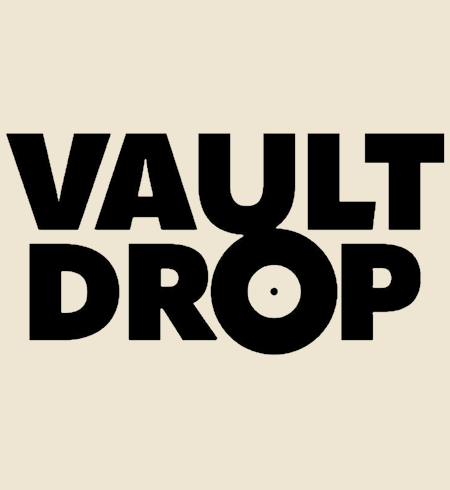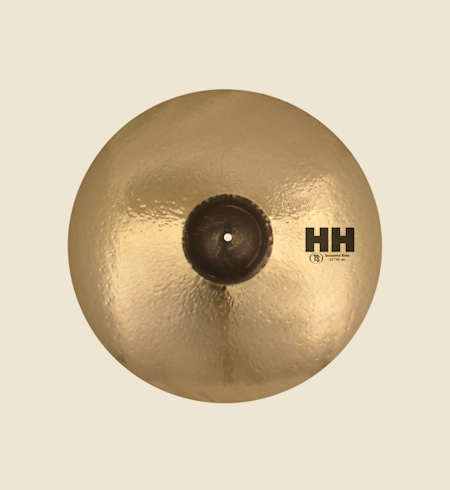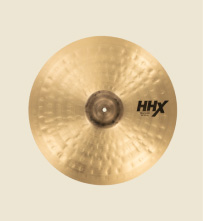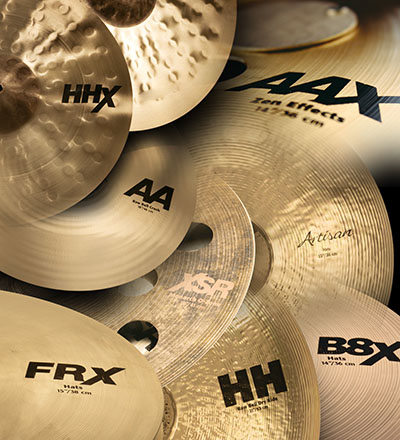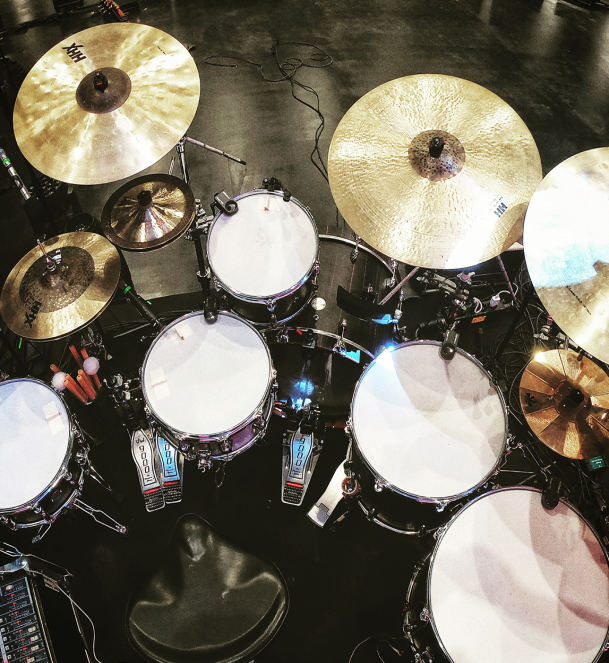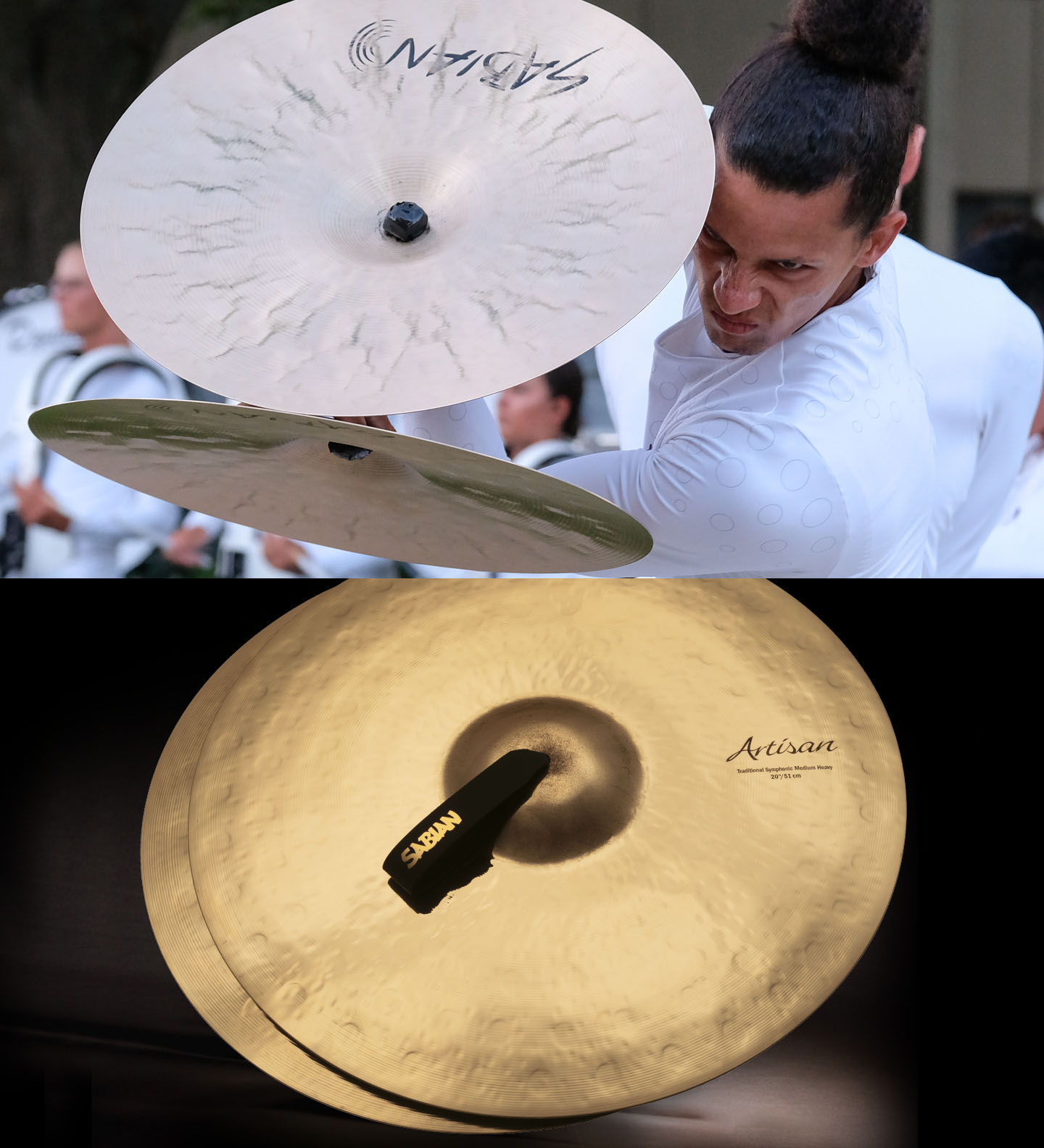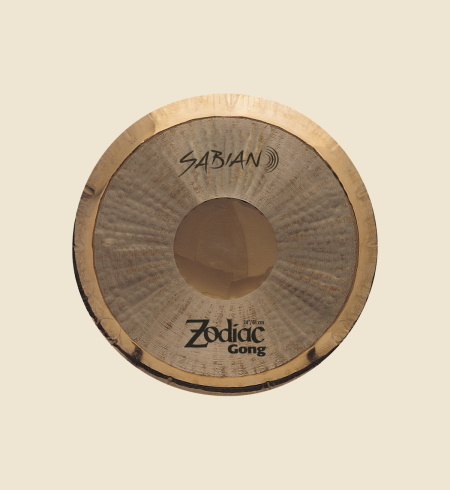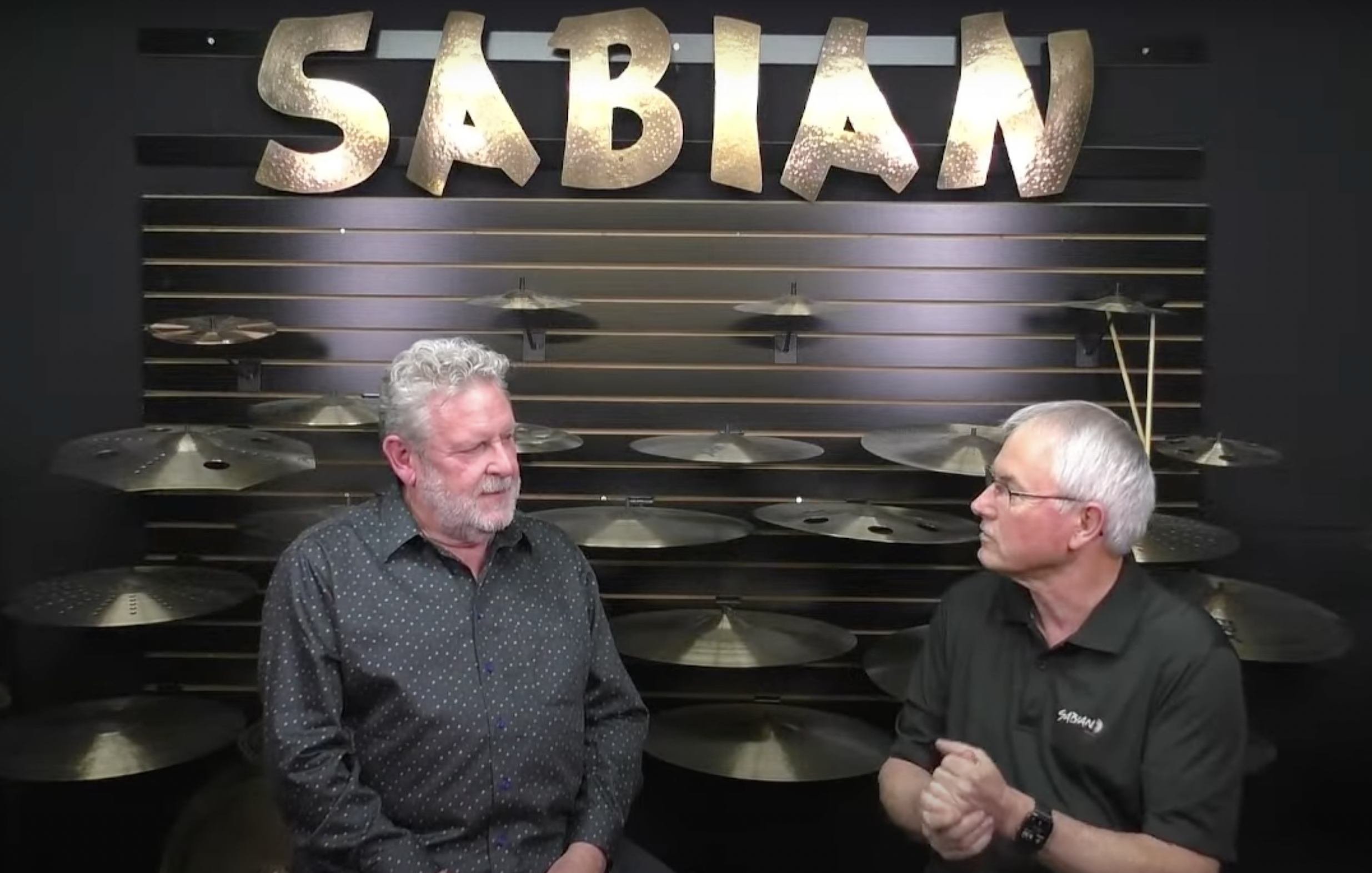Born in Richmond, Indiana, Jeff Hamilton grew up listening to his parents’ big band records and at the age of eight began playing drums along with Oscar Peterson albums. He attended Indiana University and later studied with John Von Ohlen, becoming influenced by Gene Krupa, Buddy Rich, Mel Lewis, “Philly” Joe Jones, and Shelly Manne. Hamilton has been featured on nearly 200 recordings with artists such as Natalie Cole, Diana Krall, Barbara Streisand, and Mel Torme, while he currently tours with his own Trio, the Clayton-Hamilton Jazz Orchestra and Diana Krall.
Mark Love, SABIAN’s Director of Research & Development, hosted a live Q&A with Hamilton and SABIAN’s YouTube audience during a recent visit to the SABIAN Factory in Meductic.
Mark Love: Jeff, you have your own stick and it really brings the tonal quality out of the Hammertone cymbals, and a different feel than maybe you would get out of a 5A. Can you talk a little bit about that?
Jeff Hamilton: Even though it’s small in diameter, it’s a dense stick, so it’s deceiving. You pick it up, you think you’re going to throw it over your shoulder, but there is some weight to it. It has a thicker shoulder under the beads, so it is sturdy. When you hit the cymbal, that shoulder doesn’t give very much, as opposed to a thinner shoulder. The long bead, I borrowed from the great drummer Don Lamond of Woody Herman’s Band…It has kind of a meatier feel.
ML: And you play with the three rivets in your ride and two in the China?
JH: Yeah. I keep ‘em away from the stick area, so I put the rivets away from where you’re going to hit it with the sticks.
ML: We have a few questions from the YouTube audience. Let’s dig in: “Is there a difference between the same models of cymbals for [endorsed artists] compared to what a customer might buy from a retail store?”
JH: Well, mine are $25 more [laughs].
ML: No, we make the Hammertones, or any SABIAN cymbals the same. But no, we don’t make special cymbals for artists over the general consumer. We make them a certain way, and when we get an order, we just pick them that way. If they’re good enough to get that [SABIAN] logo, then they’re good enough to be shipped out.
JH: As an artist, I don’t particularly like that idea of, “Oh, well, we’re making it for this artist, but we can’t make that for everybody.” That a sticking point with me, actually, for companies to do that. And that’s one of the things that I like about SABIAN, is that the artist is there to help design it. And that’s the cymbal that’s going to be shipped.
ML: [Reading another viewer question] “What is your preferred ride?”
JH: I’m a little different than a lot of drummers because I subscribe to the Mel Lewis method of cymbal playing, which is: If you crash it, it’s a crash cymbal. If you ride it, it’s a ride cymbal. And a good cymbal, you should be able to do both with. So, my 22” is crash-able and it can be a ride cymbal…but for ensemble playing or big band or a group ensemble passage, the 22” Hammertone is my main go-to.
ML: [Reading another viewer question] “The Hammertones are remarkable instruments. And my question is where to strike the China specifically?”
JH: Well, I can tell you, but I’d have to kill you [laughs]. Where the shoulder kind of comes down into the valley, you want to go up about an inch above that to play the side of the shoulder. I’ll have some people helping me set up once in a while, and they’ll turn the China upside down like I’m going to crash it, and I’ll just, like, look at them and go, “Jazz, please?” And they go, “Oh, sorry,” and they’ll turn it back up. Now, having said that, there are times on ballads where I will play a real straight eighth note at stick height, and just get out on the edge of it and dust it off with the stick. And that gives a beautiful sound. Also, a brush doing that on a soft tune is beautiful.
ML: [Reading another viewer question] “Why do you choose the sizes of 22” and 20”?”
JH: A lot of people think of a 22 as being a big, heavy, loud cymbal for a big band or a rock band. The Hammertone is a softer feeling cymbal, but I still play it in a big band. I got a 19-piece jazz orchestra and I use the same set of cymbals in my acoustic trio with upright bass, no amplifier…I would say, Mark, my 22 isn’t a normal 22. It’s not harsh sounding. You hear it and still have that clarity. And I don’t need a 21 or a 20 for what I do. I can get everything out of the 22.
ML: [Reading another viewer question] “What series or other cymbals in particular do you keep coming back to over the years, besides the Hammertone?”
JH: I don’t [laughs]. I’ve been playing that kind of cymbal most of my career. And so, the Hammertone is the dialed in version of everything that I’ve been playing up to now. I use the same set of cymbals for trios that I do for big band.
ML: Let’s talk a little bit about the hand hammering versus machine hammering. Because your cymbals are totally hand hammered. A lot of companies out there are making machine hammered cymbals, and the perception is that they’re hand hammered. But there is a difference and you’ve experienced that in the quality of sound.
JH: I think that if you have any kind of eye for hammering, you can look at a cymbal that wasn’t hand hammered and you can tell immediately, because there’s the same pattern design of the hammer marks on the cymbal. And that’s a dead giveaway. To me, all cymbals that aren’t hand hammered tend to have a resistance to the stick. I like to describe the stick when it hits the cymbal as a knife dropping through melted butter. It should be that gentle of a feel. And then you hear the response of what the cymbal sounds like after you let the stick drop on it, instead of forcing the stick into a piece of metal and having the metal throw of the stick back in your face. That’s kind of the feel that I’m looking for from any cymbal that I play.
ML: [Reading another viewer question] “Jeff, why do you mic your kit with only two overheads and nothing else when you perform?”
JH: I feel like drummers a lot of times don’t have their own balance. I was told at 17 years old by the great Jack Gilfoy, who was a great drummer in Indianapolis; he asked me to play and I played, and everything was out of balance. He said, “What was the loudest thing when you played?” And in jazz, the ride cymbal should be there with your hi-hat second, snare drum, bass drum last, except for accents. If you’re thinking of being your own sound engineer at the drums and you have your balance really where you want it, it’s harder for sound engineers to mess up your sound unless they have more microphones. I don’t like it when people say, “Oh, that bass drum was right here.” I don’t want the bass drum there, I want to I want to invite you into my sound. And that’s why I love the two overheads.
ML: [Reading another viewer question] “Can you talk about how the cymbals sound to the player versus the audience?”
JH: I went to see Mel Lewis, and we became friends, I’m happy to say. But Mel could be very abrupt in the way he handled answers to apparently stupid questions. I walked up to him one night and said, “Your cymbals just sound fantastic.” And he said, “Yeah, sit down and play them.” And so I played them and I said, “Wow, they sound completely different here than they did out there.” And he says, “Well, what do you care what they sound like here, dummy? They’re the people paying $40.” How do they sound out there? Can you hear them? Do they project? You can’t just have the blindfolds on with the cymbal on a stick and go, “That’s a great cymbal.” There’s more to think about. How does this cymbal sound in every situation or how does it sound 20ft from here?
ML: [Reading another viewer question] “I was wondering what the best kind of ride for a drummer with a high frequency hearing loss is?”
JH: I’m sorry, could you repeat the question [laughs]?
ML: Jeff, thanks to you and all the other great drummers out there that bring ideas in here. It gives SABIAN the opportunity to create those instruments. So thank you very much and thanks for your time for this.
This conversation has been edited for length and clarity.
